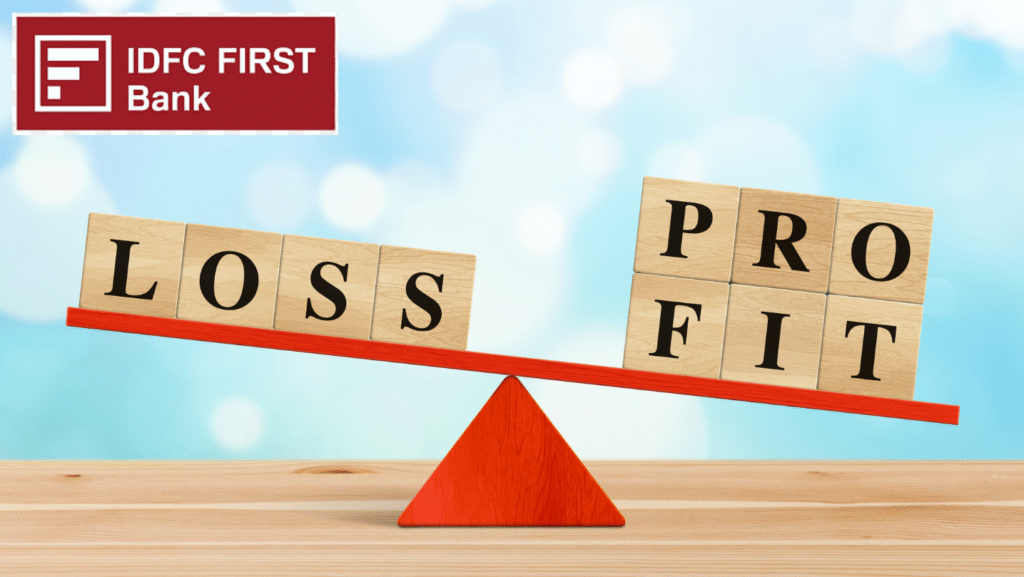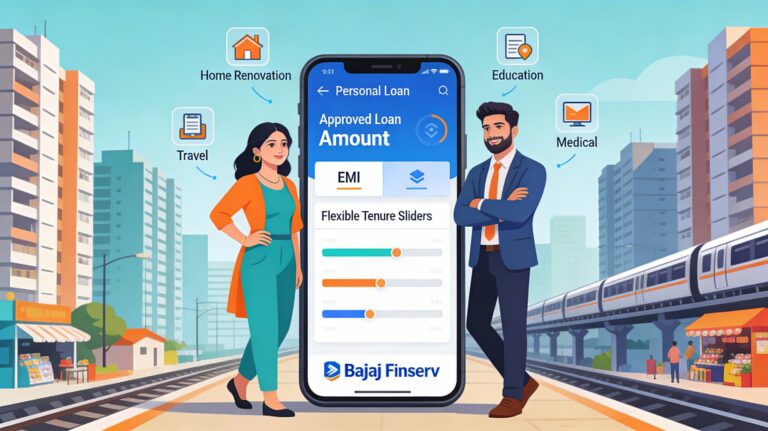
How to Maximize Your NPS Returns with 100% Equity Exposure from 1, October 2025 —Here’s What It Means for You
Could one move in 2025 make you a retirement millionaire? Starting October 1, NPS allows 100% equity investment, breaking the 75% cap! With Sensex at 90,000+ and 5.5% inflation, discover 10 bold strategies to supercharge your corpus using the new Multiple Scheme Framework. From gig workers to NRIs, who qualifies? Unlock tax savings and 19% returns, but what’s the hidden catch? Click to reveal game-changing tips and secure your financial future in India’s red-hot market before it’s too late!
The National Pension System (NPS), one of India’s most popular retirement savings schemes, is set to undergo a significant transformation from October 1, 2025. Non-government NPS subscribers will now be allowed to invest up to 100% of their funds in equities within a single scheme, a major shift from the previous limit of 75%. This change, introduced under the new Multiple Scheme Framework (MSF), promises greater flexibility, personalised retirement solutions, and aligns Indian pension planning with global best practices. For investors looking to build wealth through equity markets in their retirement corpus, this is a landmark development.
This post provides a detailed, India-perspective overview of this change, its implications, how it works, and practical advice for prospective and current NPS subscribers in 2025 and beyond.
What Is the New 100% Equity Allocation in NPS?
The National Pension System (NPS) has evolved significantly since its inception in 2004, and the latest reform marks a pivotal shift. Effective October 1, 2025, non-government sector NPS holders can allocate their funds up to 100% in equities, but only through the innovative Multiple Scheme Framework (MSF). This framework permits multiple schemes under one Permanent Retirement Account Number (PRAN), unified across Central Recordkeeping Agencies (CRAs) via your PAN.
This is a stark contrast to the pre-2025 setup, where equity exposure was capped at 75% and subscribers were restricted to a single scheme per tier. The change addresses long-standing demands for more aggressive investment options, especially as India’s equity markets have delivered stellar performance in 2025, with NPS equity funds averaging 18-19% annualized returns over the past three years.
The MSF empowers pension fund managers (PFMs) like HDFC, ICICI, and SBI to offer tailored products, reflecting the diverse needs of India’s 68 million-plus APY and NPS subscribers as of August 2025.
Key Highlights of MSF and 100% Equity Allocation
- 100% Equity Exposure: Previously capped at 75%, the new high-risk schemes under MSF can have full equity allocation, ideal for capitalizing on India’s growth story.
- Multiple Schemes Under One PAN: Subscribers can now hold and manage multiple NPS schemes simultaneously, simplifying portfolio management.
- Scheme Variants: Each pension fund manager (PFM) will offer at least two variants per scheme—moderate risk and high risk (100% equity). Low-risk options may also be offered for conservative profiles.
- Tailored Schemes: Schemes customized for different subscriber groups, including corporate employees, self-employed professionals, and gig economy workers, addressing India’s informal sector challenges.
- Benchmarking: Schemes will be benchmarked against relevant market indices like Nifty 50 for transparency, ensuring investors can track performance easily.
- Exit Flexibility: Minimum 15-year vesting period with exit options between ages 50 and 75, aligning with life expectancy trends in India.
This flexibility facilitates more personalised retirement investment strategies aligned with individual risk appetites and financial goals. For instance, a 30-year-old freelancer could go all-in on equities, potentially growing their corpus exponentially over decades, given NPS’s low costs and tax benefits.
As per the latest PFRDA circular dated September 16, 2025, this reform aims to boost NPS adoption, which has seen AUM surge to approximately Rs 15 lakh crore by August 2025. With over 10 million new subscribers in FY 2024-25 alone, the MSF is poised to accelerate this growth.
Why Is This Change Significant for Indian Investors?
India’s retirement landscape is transforming amid rapid urbanization and a youthful demographic. The 100% equity in NPS from October 1, 2025, breaks barriers for millions, especially in a year where equity markets have rewarded bold investors. This reform not only enhances wealth creation but also democratizes access to high-growth assets.
Breaking the 75% Equity Cap Barrier
For years, the maximum equity allocation for non-government NPS subscribers was 75%. This cap limited the growth potential of equity-savvy investors who wanted full exposure to equities within the NPS framework. Increasing the equity exposure to 100% allows younger investors and those with higher risk appetites to capitalize fully on market growth opportunities.
Consider the performance data: As of September 17, 2025, NPS equity schemes have shown robust returns, with top performers like ICICI PFM delivering 18.97% over three years. The old cap meant missing out on an extra 25% in potential high returns, which over 20-30 years could compound into lakhs for the average Indian saver.
In 2025, with India’s GDP projected at 7% growth and stock markets buoyant, this uncapping is timely. It empowers investors to ride waves like the tech boom or infrastructure surge, without shifting to riskier mutual funds outside NPS.
Personalisation and Diversification
MSF enables greater diversification by allowing multiple schemes and risk profiles within a single PRAN. Investors can balance aggressive growth strategies with conservative schemes tailored for different life stages or income groups.
For a middle-class family in Chennai, this means allocating one scheme to 100% equities for long-term growth and another to debt for stability. This personalization mirrors the needs of India’s diverse workforce, from IT professionals to small business owners.
With NPS AUM hitting Rs 14.4 lakh crore in FY 2024-25, the MSF will likely drive further inflows by offering bespoke options.
Alignment with Global Pension Practices
Many global pension systems allow equity exposure well above 75%, with flexible risk profiling based on economic conditions and investor demographics. The new MSF framework brings India’s pension system closer to these advanced standards, fostering better retirement wealth creation over the long term.
For example, US 401(k) plans often permit 100% stock allocations, contributing to higher retirement savings. In India, this alignment could help bridge the retirement gap, where only 20% of the workforce has formal pension coverage.
As PFRDA noted in its September 2025 announcement, this positions NPS as a world-class product, attracting more NRIs and young Indians.
Supporting Gig and Self-Employed Workers
India’s emerging gig economy and self-employed professionals often lack structured retirement benefits. The MSF offers pension fund schemes designed specifically for these groups, increasing NPS accessibility and uptake.
With over 500 million in the informal sector, tailored schemes for gig workers—like those on platforms such as Uber or Zomato—provide low-entry barriers and high-equity options. In 2025, as gig jobs grow by 15%, this reform ensures financial security for this demographic.
Narratives from self-employed individuals highlight the relief: A freelance graphic designer in Kolkata can now build a robust corpus without employer support, leveraging 100% equity for inflation-beating returns.
How the Multiple Scheme Framework (MSF) Works
The MSF, introduced via PFRDA's circular effective October 1, 2025, revolutionizes NPS operations. It's designed for seamless integration, using technology to enhance user experience in India's digital-first economy.
Overview of MSF Structure
The MSF is built around the PAN as a unique identifier, allowing a subscriber to hold multiple schemes under the same PRAN across different CRAs like CAMS, Protean, and KFintech. This contrasts with the old system where each subscriber could have only one scheme per tier linked to a single CRA.
This PAN-centric approach simplifies tracking, especially for mobile Indians switching jobs or cities. With NPS apps updated for MSF, subscribers can manage portfolios effortlessly.
As of 2025, with 68 million APY subscribers and growing NPS base, this structure reduces administrative hurdles.
Variants Under Each Scheme
- Moderate Risk Variant: Balanced mix of equities and debt for moderate growth with controlled risk, suitable for mid-career professionals.
- High-Risk Variant: Up to 100% equity exposure for maximum growth potential, targeting young investors eyeing 15-20% long-term returns.
- Optional Low-Risk Variant: Offered at the discretion of PFMs for conservative investors, focusing on debt and government securities.
Risk profiling will use income or socioeconomic parameters for informed scheme selection. PFRDA mandates PFMs to provide at least two variants, ensuring choice.
Investment and Exit Provisions
- Minimum Vesting Period: 15 years, promoting long-term saving habits.
- Exit Age Options: Early exit possible from 50 or 55 years; retirement age limit is 75, accommodating longer lifespans.
- Exit Norms: Same as existing PFRDA guidelines, with 40% annuitization for steady income.
Annual statements will be available, and account access will be through an account aggregator system using PAN. In practice, this means easier partial withdrawals for emergencies, with tax implications under Section 80CCD.
For illustration, a 40-year-old investing Rs 5,000 monthly at 100% equity could amass over Rs 1 crore by 60, based on historical 12% CAGR adjusted for 2025 trends.
Who Is Eligible for 100% Equity Allocation in NPS?
The new rules apply specifically to non-government NPS subscribers. This primarily includes:
- Private-sector employees with NPS Tier 1 or Tier 2 accounts, comprising the bulk of the 12 lakh new private subscribers in 2024-25.
- Self-employed professionals and business owners, who can now customize for irregular incomes.
- Gig economy and platform-based workers, benefiting from low-minimum schemes.
- Others who are not covered under government-sector NPS, like NRIs or homemakers opting in.
Government employees covered under separate pension schemes or UPS (Unified Pension Scheme) have different rules and timelines, often with lower equity caps.
Eligibility requires an active PRAN and compliance with KYC norms. As per PFRDA's 2025 data, this opens doors for over 50 million potential subscribers in the private sector.
A narrative: A startup founder in Hyderabad, previously deterred by rigidity, can now fully equity-allocate, aligning with entrepreneurial risk profiles.
Benefits of 100% Equity Investment in NPS
- Higher Growth Potential: Equity historically outperforms debt, especially over long investment horizons relevant for retirement. In 2025, NPS equity funds have yielded up to 19% over three years.
- Flexibility: Choose multiple schemes with different risk profiles through one PRAN, adapting to life changes.
- Personalised Investment Approach: Align portfolio with your risk appetite, income level, occupation, and life stage, crucial in volatile Indian markets.
- Cost-Effective: NPS remains a low-cost product with fees capped at 0.30% of assets under management, far below mutual funds.
- Transparency: Scheme performance benchmarks ensure clarity on returns, with weekly snapshots from NPS Trust.
- Improved Liquidity: Earlier exit provisions compared to previous NPS rules, with options from age 50.
Additional perks include tax deductions up to Rs 50,000 under 80CCD(1B), EEE status, and integration with India's financial ecosystem. Compared to EPF or PPF, NPS offers superior equity access, potentially doubling corpus growth.
For a salaried Mumbaikar, this means retiring with dignity amid rising costs, as AUM growth reflects strong investor confidence.
How to Make the Most of 100% Equity Allocation in NPS
Navigating the 100% equity in NPS requires strategic planning. Here's a step-by-step guide tailored for Indian investors in 2025.
Step 1: Assess Your Risk Appetite and Goals
Understand your financial situation, retirement goals, and risk tolerance. Younger investors or those with high-risk capacity can consider 100% equity exposure for growth, while others may opt for moderate or mixed schemes.
Use tools like PFRDA's risk profiler app. For example, if you're 35 with stable income, aim for 80-100% equity; closer to retirement, taper to 50%.
Step 2: Choose the Right Schemes Under MSF
Use the flexibility of MSF to diversify across multiple pension fund schemes tailored to your profile. Mix moderate and high-risk variants for a balanced approach.
Review PFMs: ICICI for top equity returns, SBI for stability. Start with Tier 1 for tax benefits, add Tier 2 for liquidity.
Step 3: Monitor and Rebalance Periodically
Regularly review scheme performance and reallocate assets as your goals or market conditions change. Set annual check-ins, especially post-budget or amid global events.
In 2025's volatile market, rebalance if equity dips below 10% target variance.
Step 4: Use Professional Advice
Consider consulting financial advisors or SEBI-registered investment advisors to choose personalized NPS schemes appropriately. They can model scenarios, like projecting Rs 2 crore corpus at 12% returns.
Avoid DIY pitfalls; advisors ensure compliance with PFRDA norms.
Common Mistakes to Avoid with 100% Equity in NPS
- Ignoring Risk Tolerance: Overexposure to equity without ability to absorb market volatility can be harmful, leading to panic selling during downturns like the 2022 correction.
- Neglecting Diversification: Put all funds in a single scheme without balancing moderate-risk products, exposing to sector-specific risks.
- Timing Market Cycles: Avoid switching strategies based on short-term market fluctuations; stick to long-term plans.
- Overlooking Exit Rules: Plan exit or partial withdrawal with due consideration to vesting and taxation, or face penalties.
- Missing Compliance: Ensure investments comply with latest PFRDA norms to avoid penalties, like updating KYC annually.
Real stories abound: An investor in Pune lost gains by chasing trends post-2025 rally, underscoring discipline.
Additional Pro Tips for Indian Investors
- Use the NPS app or CRA portals (CAMS, Protean, Kfintech) for easy access and scheme switching, now MSF-enabled.
- Consider NPS Tier 2 account for more liquidity options alongside Tier 1 pension saving, ideal for short-term goals.
- Regularly check updates from PFRDA to stay informed about scheme options and charges, via their website or alerts.
- Benefit from contributions under Section 80CCD(1B) to avail additional tax benefits up to Rs 50,000 annually, maximizing savings.
- Coordinate NPS investments with other retirement assets like EPF, PPF for an optimal strategy, creating a diversified nest egg.
In 2025, leverage fintech integrations for auto-contributions, boosting adherence.
Featured Snippet Summary
From October 1, 2025, non-government NPS subscribers can invest up to 100% of their funds in equities through the new Multiple Scheme Framework (MSF). MSF enables multiple schemes under a single PRAN with options for moderate and high-risk variants, removing the earlier 75% equity cap. This reform offers greater personalisation, diversification, and potential for higher retirement corpus growth, supporting India’s evolving workforce including gig and self-employed workers.
Final Thought: What Should Investors Do Next?
The 100% equity allocation in NPS under the MSF framework is a game-changer for retirement planning in India, especially with 2025's market highs and AUM milestones. Investors should:
- Revisit their retirement investment strategy considering full equity options, calculating potential growth using online tools.
- Explore multiple tailored schemes to align NPS investments with personal goals, starting October 1.
- Stay updated with official PFRDA communications and use NPS platforms to manage investments actively.
- Consider financial advice to strike the right balance between risk and return, perhaps scheduling a consultation today.
This change opens new doors to build a robust retirement corpus. It is a great time for non-government NPS subscribers to proactively engage with their pension portfolio and leverage the power of equity markets for long-term growth. Don't wait—log into your CRA portal now and prepare for a secure future.

































